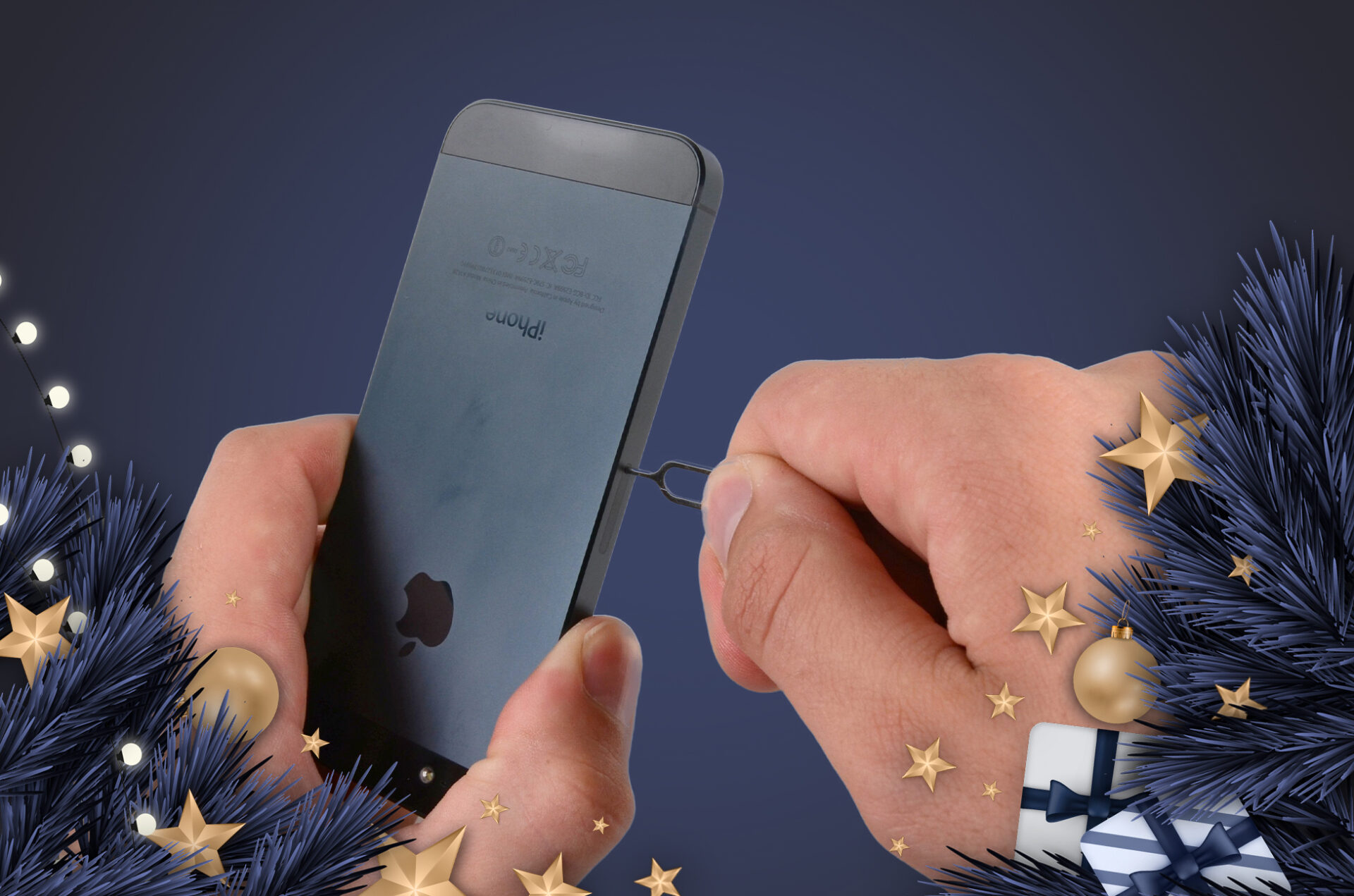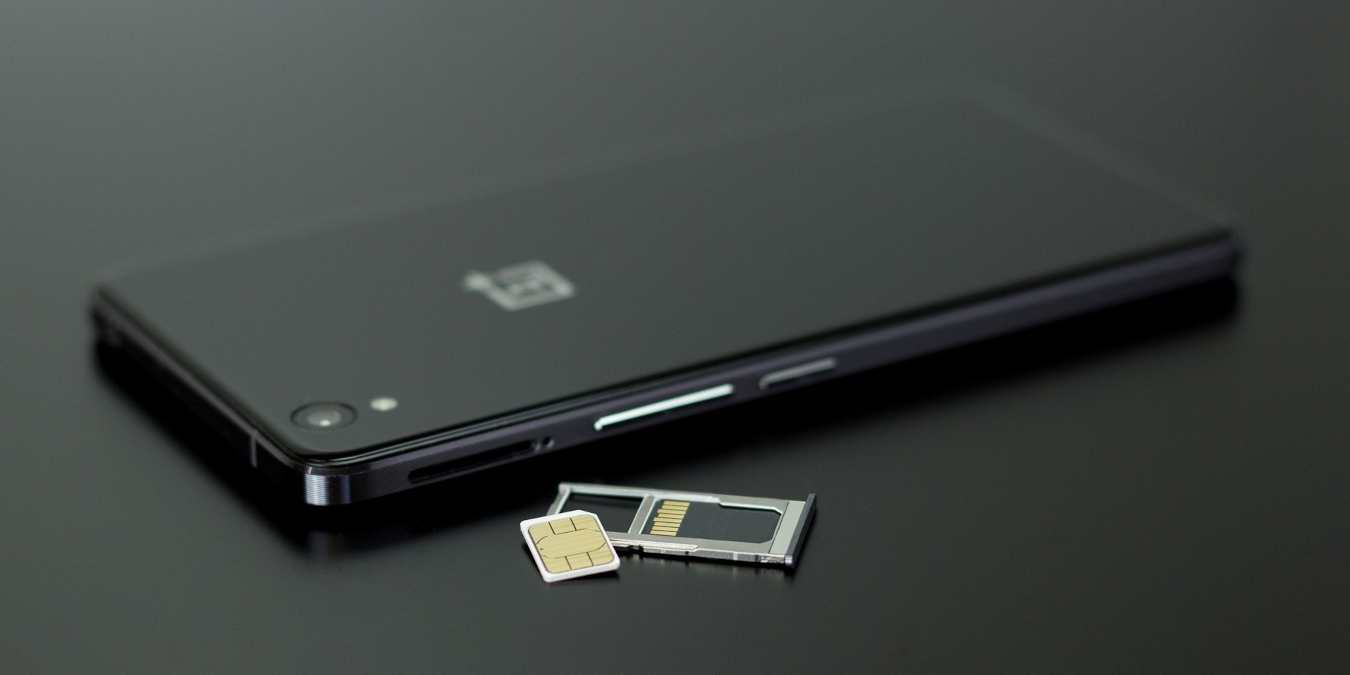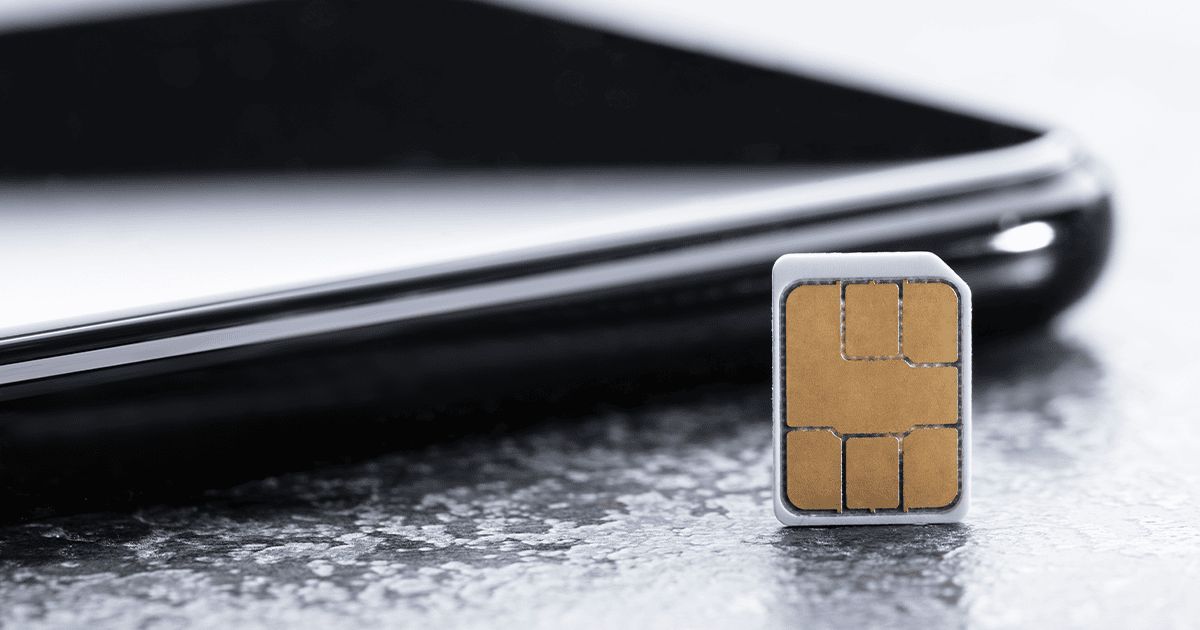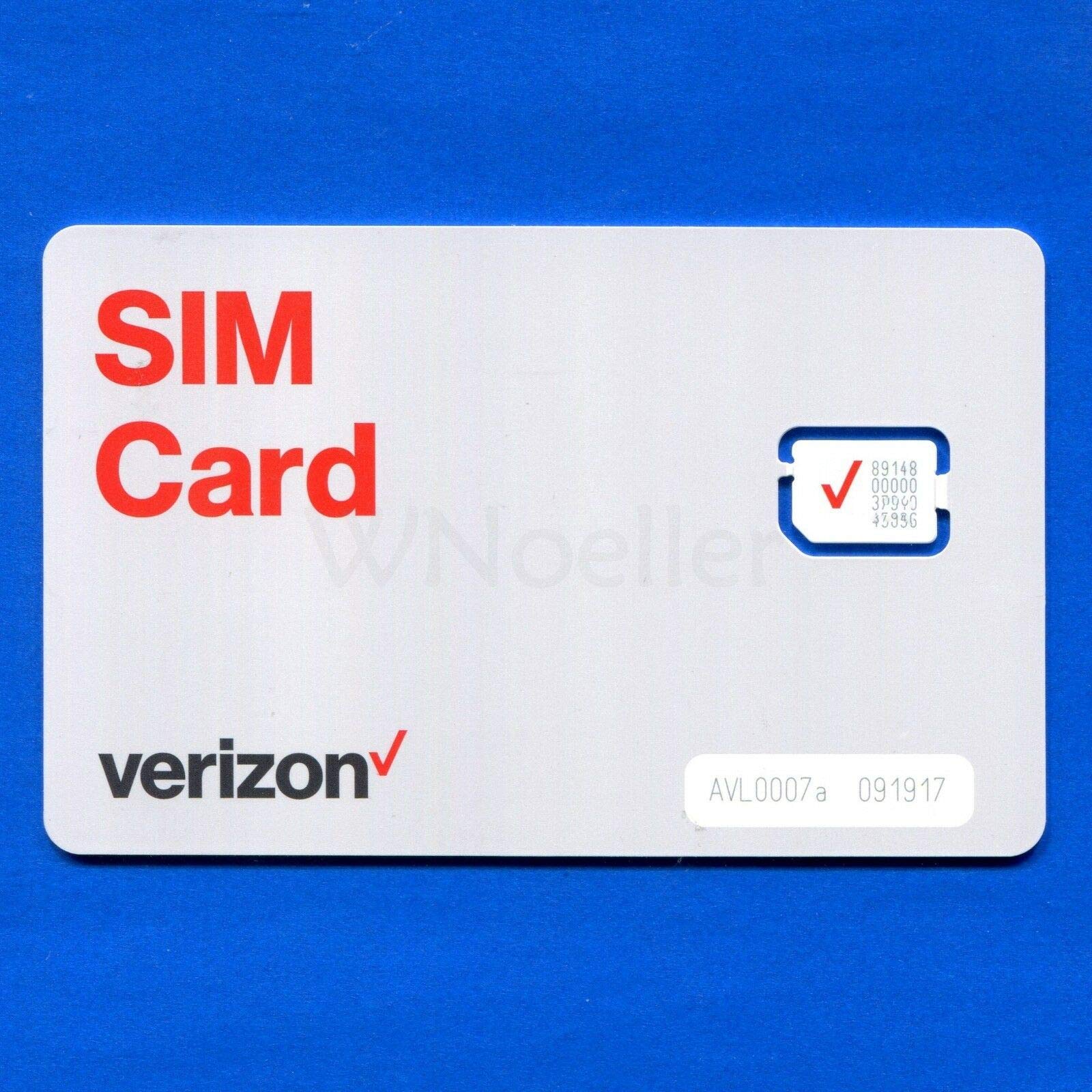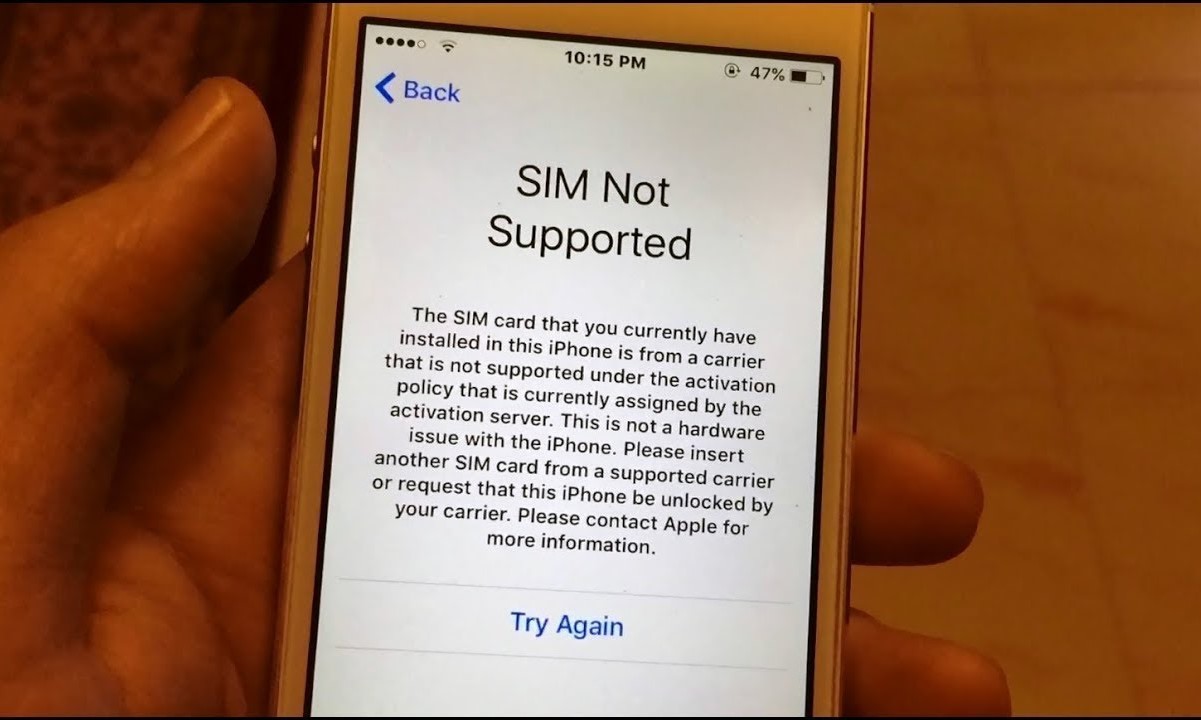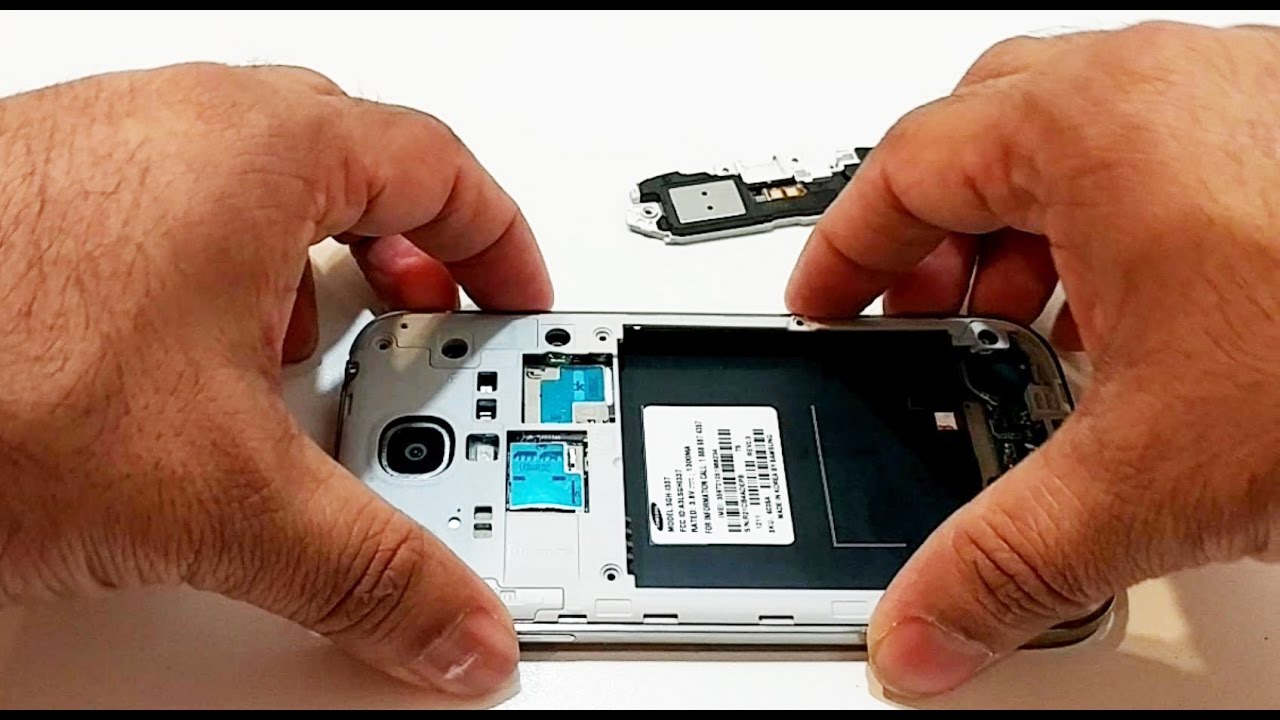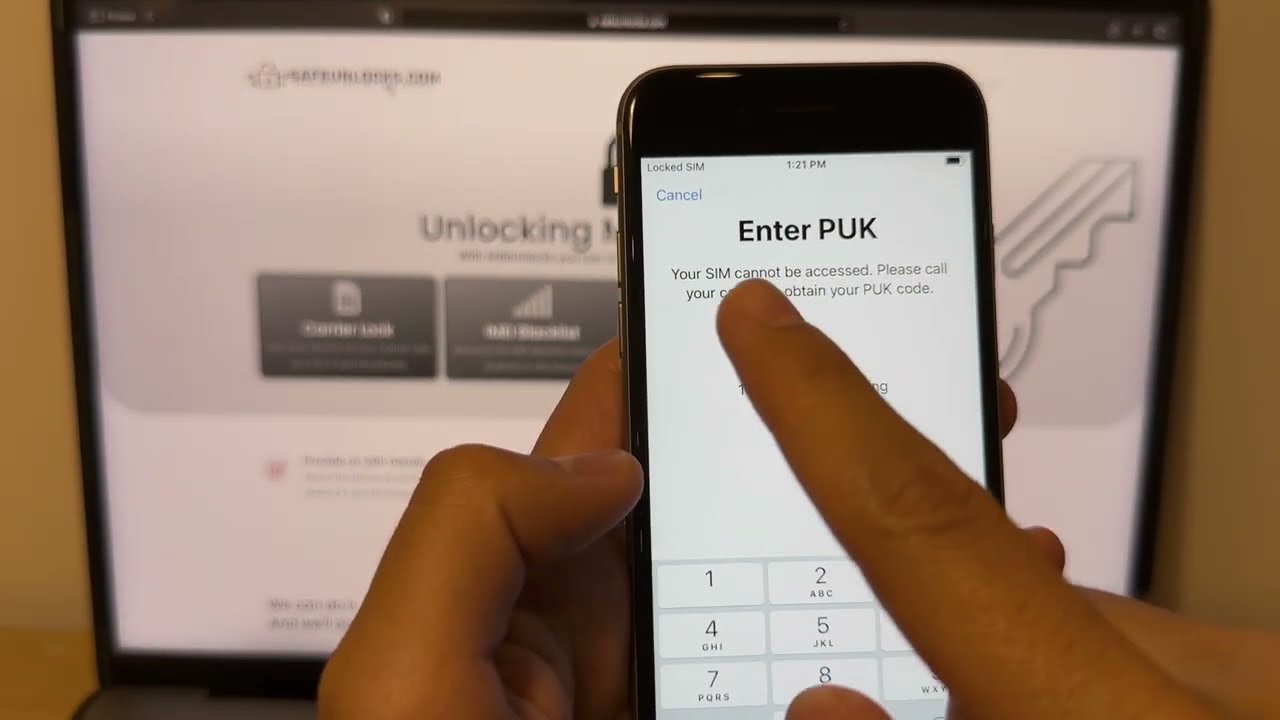Introduction
Encountering the "Network Locked SIM Card Inserted" issue can be a frustrating experience for mobile device users. This problem often arises when attempting to use a SIM card from a different carrier than the one the device is locked to. When faced with this error message, users may find themselves unable to make calls, send texts, or access mobile data, significantly impacting their ability to stay connected.
In this comprehensive guide, we will delve into the causes of the "Network Locked SIM Card Inserted" issue and explore various methods to resolve it. Whether you're a seasoned mobile device user or a newcomer to the world of smartphones, understanding the underlying reasons for this problem and learning how to address it effectively is essential for a seamless mobile experience.
By the end of this guide, you will have a clear understanding of the steps you can take to troubleshoot and resolve the "Network Locked SIM Card Inserted" issue, empowering you to regain control over your device's network connectivity. Let's embark on this journey to unravel the complexities of this common mobile device challenge and equip ourselves with the knowledge to overcome it.
Understanding the "Network Locked SIM Card Inserted" Issue
The "Network Locked SIM Card Inserted" issue stems from the practice of carrier locking, a common strategy employed by mobile network providers to restrict a device's compatibility with SIM cards from other carriers. When a smartphone is purchased through a specific network carrier, it is often locked to that carrier's network, preventing the use of SIM cards from other providers. This restriction is intended to ensure that customers fulfill their contractual obligations and prevent the easy migration of devices to competing networks.
When users attempt to insert a SIM card from a different carrier into a network-locked device, they are met with the "Network Locked SIM Card Inserted" error message. This notification serves as a barrier, indicating that the device is not currently compatible with the inserted SIM card due to the carrier lock.
The implications of this issue are far-reaching, as users may experience a loss of functionality, including the inability to make calls, send text messages, or access mobile data. This can be particularly problematic for individuals who travel internationally or wish to switch to a different network provider while retaining their existing device.
Understanding the "Network Locked SIM Card Inserted" issue involves recognizing the intricate relationship between mobile devices and carrier networks. By comprehending the concept of carrier locking and its impact on device compatibility, users can navigate the challenges associated with this issue more effectively. With this understanding as our foundation, we can now explore the common causes of the "Network Locked SIM Card Inserted" issue and delve into the various methods available to rectify this inconvenience.
Common Causes of the Issue
The "Network Locked SIM Card Inserted" issue can be attributed to several common causes, each shedding light on the complexities of carrier locking and its impact on mobile device functionality. Understanding these underlying factors is crucial in unraveling the intricacies of this prevalent problem. Let's explore the primary causes contributing to the emergence of this issue:
-
Carrier Locking: The fundamental cause of the "Network Locked SIM Card Inserted" problem lies in carrier locking, a practice employed by network providers to tie a device exclusively to their network. When a smartphone is initially purchased through a specific carrier, it is often locked to that carrier's network, limiting its compatibility with SIM cards from other providers. This intentional restriction is designed to discourage users from switching to rival networks and ensure compliance with contractual obligations.
-
Device Subsidization: In many cases, carrier-locked devices are offered at subsidized prices, enticing customers to commit to extended service contracts. To offset the cost of the device, carriers implement network locks, effectively binding the device to their network until the contractual obligations are fulfilled. This subsidization strategy, while beneficial for upfront affordability, contributes to the prevalence of the "Network Locked SIM Card Inserted" issue.
-
International Roaming Restrictions: For users who travel internationally, carrier locking can pose significant challenges. When attempting to use a local SIM card from a foreign carrier while abroad, the device's network lock may trigger the "Network Locked SIM Card Inserted" error, impeding the seamless integration of the foreign SIM card. This limitation can hinder travelers' ability to access cost-effective local network services while overseas.
-
Preventing Device Theft and Fraud: Carrier locking serves as a security measure to deter device theft and fraudulent activities. By restricting a device's compatibility with SIM cards from unauthorized networks, carriers aim to safeguard user data and prevent unauthorized use of stolen or lost devices. While this security feature offers protection, it also contributes to the prevalence of the "Network Locked SIM Card Inserted" issue.
By recognizing these common causes, users can gain valuable insights into the intricacies of carrier locking and its impact on device compatibility. This understanding sets the stage for exploring effective methods to address and resolve the "Network Locked SIM Card Inserted" issue, empowering users to regain control over their device's network connectivity.
How to Fix the "Network Locked SIM Card Inserted" Issue
Resolving the "Network Locked SIM Card Inserted" issue requires a strategic approach that considers the unique circumstances of the device and the user's specific requirements. Fortunately, several methods are available to address this challenge, offering users the opportunity to regain control over their device's network compatibility. Let's explore these methods in detail:
Method 1: Contacting Your Carrier
Initiating direct communication with your current network carrier can provide valuable insights into the status of your device's network lock. By reaching out to the carrier's customer support or visiting a local store, users can inquire about the possibility of unlocking their device for compatibility with SIM cards from other carriers. This process may involve fulfilling certain criteria, such as completing the terms of a service contract or settling outstanding financial obligations. If eligible, the carrier may provide an unlock code or initiate the unlocking process, enabling the seamless use of alternative SIM cards.
Method 2: Using a SIM Unlock Code
For users seeking a more independent approach, obtaining a SIM unlock code for their device presents a viable solution. This method involves acquiring an unlock code specific to the device's IMEI (International Mobile Equipment Identity) number, which can be obtained from various sources, including third-party unlocking services or online platforms. Once in possession of the unlock code, users can enter it into their device, thereby lifting the network lock and allowing the use of SIM cards from different carriers.
Method 3: Using a Third-Party Unlocking Service
Engaging a reputable third-party unlocking service can streamline the process of unlocking a network-locked device. These services specialize in providing unlock codes or utilizing software-based unlocking methods to liberate devices from carrier restrictions. Users can leverage the expertise of these services to navigate the intricacies of unlocking, ensuring a seamless transition to using SIM cards from diverse network providers.
Method 4: Resetting Your Phone to Factory Settings
In certain scenarios, resetting the device to its factory settings can serve as a last-resort method to address the "Network Locked SIM Card Inserted" issue. This process involves backing up essential data and performing a factory reset, effectively wiping the device's software configuration and potentially removing the network lock. However, it is crucial to exercise caution when employing this method, as it can lead to the loss of personal data and customized settings.
By exploring these methods, users can gain a comprehensive understanding of the available strategies to resolve the "Network Locked SIM Card Inserted" issue. Each method offers unique advantages and considerations, empowering users to select the most suitable approach based on their individual circumstances. With these solutions at their disposal, users can navigate the complexities of carrier locking with confidence, ensuring uninterrupted access to mobile network services.
Method 1: Contacting Your Carrier
Initiating direct communication with your current network carrier can provide valuable insights into the status of your device's network lock. When faced with the "Network Locked SIM Card Inserted" issue, reaching out to the carrier's customer support or visiting a local store can offer a proactive approach to resolving the compatibility limitations.
Upon contacting the carrier, users can inquire about the possibility of unlocking their device for compatibility with SIM cards from other carriers. This process may involve fulfilling certain criteria, such as completing the terms of a service contract or settling outstanding financial obligations. By engaging in a transparent dialogue with the carrier, users can gain clarity on the specific requirements and procedures associated with unlocking their device.
In many cases, carriers have established guidelines and protocols for unlocking devices, outlining the eligibility criteria and the steps to initiate the unlocking process. By adhering to these guidelines, users can navigate the unlocking process with confidence, knowing that they are following the carrier's prescribed procedures.
If deemed eligible, the carrier may provide an unlock code or initiate the unlocking process on the user's behalf. The provision of an unlock code empowers users to take control of the unlocking process, enabling them to input the code into their device and liberate it from the network lock. This direct involvement in the unlocking process can instill a sense of empowerment and autonomy, allowing users to actively participate in resolving the compatibility restrictions.
Furthermore, by establishing direct communication with the carrier, users can gain insights into the implications of unlocking their device, including any potential impact on existing service contracts or warranties. This transparency fosters informed decision-making, enabling users to weigh the benefits of unlocking their device against any associated considerations.
Overall, contacting your carrier represents a proactive and collaborative approach to addressing the "Network Locked SIM Card Inserted" issue. By leveraging the expertise and resources of the carrier, users can navigate the complexities of carrier locking with clarity and confidence, ultimately unlocking the full potential of their mobile device's network compatibility.
Method 2: Using a SIM Unlock Code
Unlocking a network-locked device using a SIM unlock code presents an independent and effective solution to the "Network Locked SIM Card Inserted" issue. This method empowers users to liberate their devices from carrier restrictions, enabling the seamless use of SIM cards from diverse network providers.
The process of obtaining and utilizing a SIM unlock code typically begins with identifying the device's IMEI (International Mobile Equipment Identity) number, a unique identifier that distinguishes the device within the mobile network. Users can locate their device's IMEI number by dialing *#06# on the device or accessing the device settings.
Once the IMEI number is obtained, users can explore various sources to acquire a SIM unlock code. Third-party unlocking services, online platforms specializing in device unlocking, and reputable mobile device retailers are among the common sources for obtaining unlock codes. It is important to exercise caution and ensure the legitimacy of the source when obtaining an unlock code to safeguard the integrity of the device and its software.
Upon obtaining the SIM unlock code, users can proceed to input the code into their device, following the specific instructions provided by the source of the unlock code. This process typically involves inserting a non-compatible SIM card into the device and entering the unlock code when prompted. Upon successful entry of the unlock code, the device undergoes a seamless unlocking process, effectively lifting the network lock and enabling compatibility with SIM cards from different carriers.
The utilization of a SIM unlock code offers users a sense of autonomy and control over the unlocking process, allowing them to independently navigate the complexities of carrier locking. This method eliminates the need for direct involvement with the current network carrier, providing users with a self-directed approach to resolving the compatibility limitations.
Furthermore, the utilization of a SIM unlock code can expedite the unlocking process, enabling users to swiftly transition to using SIM cards from diverse network providers. This efficiency is particularly beneficial for individuals seeking immediate compatibility with alternative carriers or those navigating time-sensitive network connectivity requirements.
By leveraging a SIM unlock code, users can effectively address the "Network Locked SIM Card Inserted" issue, unlocking the full potential of their devices and embracing the flexibility to seamlessly integrate SIM cards from a wide range of network providers. This method empowers users to take control of their device's network compatibility, ensuring uninterrupted access to essential mobile services.
Method 3: Using a Third-Party Unlocking Service
Engaging a reputable third-party unlocking service provides a streamlined and efficient approach to resolving the "Network Locked SIM Card Inserted" issue. These specialized services offer expertise in unlocking network-locked devices, empowering users to liberate their devices from carrier restrictions and expand their compatibility with SIM cards from diverse network providers.
When considering the utilization of a third-party unlocking service, users can benefit from the extensive knowledge and experience offered by these dedicated providers. Reputable third-party services are equipped with the technical proficiency and resources necessary to navigate the complexities of carrier locking, ensuring a seamless and reliable unlocking process.
The process of utilizing a third-party unlocking service typically begins with identifying a reputable and trusted provider. Users can conduct thorough research, seeking recommendations from reliable sources and exploring customer reviews to gauge the credibility and track record of potential service providers. This diligent approach enables users to align themselves with reputable unlocking services, safeguarding the integrity of their devices and ensuring the legitimacy of the unlocking process.
Upon selecting a trusted third-party unlocking service, users can initiate the unlocking process by engaging with the service provider and providing the necessary details of their device, including the IMEI (International Mobile Equipment Identity) number. This essential information serves as the foundation for the unlocking process, enabling the service provider to generate an unlock code or employ software-based unlocking methods tailored to the specific device.
The expertise of third-party unlocking services extends to navigating the intricacies of different device models and carrier restrictions, ensuring that the unlocking process is tailored to the unique specifications of the user's device. This personalized approach instills confidence in users, knowing that their devices are in the hands of experienced professionals capable of delivering a successful unlocking outcome.
By leveraging the proficiency of a reputable third-party unlocking service, users can expedite the unlocking process and overcome the compatibility limitations imposed by carrier locking. This collaborative approach empowers users to transcend the confines of network restrictions, embracing the freedom to seamlessly integrate SIM cards from a diverse array of network providers.
In summary, utilizing a third-party unlocking service represents a strategic and effective method for addressing the "Network Locked SIM Card Inserted" issue. By partnering with experienced professionals, users can navigate the complexities of carrier locking with confidence, ultimately unlocking the full potential of their devices and enhancing their connectivity options.
Method 4: Resetting Your Phone to Factory Settings
In certain scenarios, resetting a mobile device to its factory settings can serve as a potential method to address the "Network Locked SIM Card Inserted" issue. This approach involves restoring the device to its original state, effectively wiping the software configuration and potentially removing the network lock. However, it is essential to exercise caution when considering this method, as it carries significant implications for the device's data and settings.
Before proceeding with a factory reset, users should prioritize backing up essential data, including contacts, photos, and any personalized settings. This precautionary measure ensures that valuable information is safeguarded and can be restored following the reset. Once the backup process is complete, users can initiate the factory reset through the device's settings or recovery mode, following the prescribed steps provided by the device manufacturer.
It is important to note that a factory reset results in the deletion of all user-installed apps, settings, and personal data stored on the device. As such, users should carefully consider the potential impact on their stored information and be prepared to reconfigure the device following the reset. Additionally, any customizations or modifications made to the device's software, including rooting or custom ROM installations, may be reverted to the original state as part of the factory reset process.
When contemplating a factory reset to address the "Network Locked SIM Card Inserted" issue, users should weigh the potential benefits against the implications for their data and settings. While a successful reset may alleviate the network lock and enable compatibility with alternative SIM cards, it is crucial to approach this method with a thorough understanding of its impact on the device's software and user data.
Furthermore, users should consider the underlying cause of the network lock before proceeding with a factory reset. If the device is carrier-locked due to contractual obligations or outstanding financial commitments, a factory reset may not fully address the issue. In such cases, engaging with the current network carrier or exploring alternative unlocking methods may offer more targeted solutions.
In summary, resetting a mobile device to its factory settings represents a potential method to address the "Network Locked SIM Card Inserted" issue, albeit with significant considerations regarding data loss and software reconfiguration. By approaching this method with careful deliberation and a thorough backup strategy, users can assess its suitability in resolving the compatibility limitations imposed by carrier locking.
Conclusion
In conclusion, the "Network Locked SIM Card Inserted" issue presents a multifaceted challenge stemming from carrier locking practices and their impact on device compatibility. This prevalent issue can disrupt users' ability to seamlessly integrate alternative SIM cards, hindering their access to essential mobile services and impeding their flexibility in choosing network providers. However, by delving into the underlying causes of the problem and exploring effective methods to address it, users can navigate the complexities of carrier locking with confidence and regain control over their device's network compatibility.
The common causes of the "Network Locked SIM Card Inserted" issue, including carrier locking, device subsidization, international roaming restrictions, and security measures against theft and fraud, underscore the intricate dynamics at play. Understanding these underlying factors is crucial in unraveling the complexities of carrier locking and its implications for device functionality. By recognizing these causes, users gain valuable insights into the intricacies of carrier locking, empowering them to make informed decisions when addressing the issue.
The methods outlined for resolving the "Network Locked SIM Card Inserted" issue offer diverse approaches tailored to users' specific circumstances. From engaging with the current network carrier to utilizing SIM unlock codes, third-party unlocking services, and considering a factory reset, users have a range of strategies at their disposal. Each method presents unique advantages and considerations, enabling users to select the most suitable approach based on their individual needs and preferences.
By proactively engaging with the current network carrier, users can navigate the unlocking process with transparency and clarity, potentially securing an unlock code or initiating the unlocking process through official channels. Alternatively, the independent utilization of SIM unlock codes empowers users to take control of the unlocking process, fostering a sense of autonomy and expediting the transition to using alternative SIM cards. Engaging reputable third-party unlocking services provides a collaborative approach, leveraging the expertise of professionals to ensure a seamless unlocking outcome. Finally, considering a factory reset as a last-resort method underscores the importance of thorough deliberation and data backup to mitigate potential data loss.
In essence, the journey to resolve the "Network Locked SIM Card Inserted" issue is characterized by empowerment, informed decision-making, and a proactive approach to overcoming the challenges posed by carrier locking. By embracing these methods and understanding the complexities of the issue, users can unlock the full potential of their devices, enjoy expanded network compatibility, and seamlessly integrate SIM cards from diverse network providers. Ultimately, this comprehensive guide equips users with the knowledge and strategies to navigate the intricacies of carrier locking, ensuring uninterrupted access to essential mobile services and enhancing their mobile device experience.







